Faculty of Arts Building University of Warwick
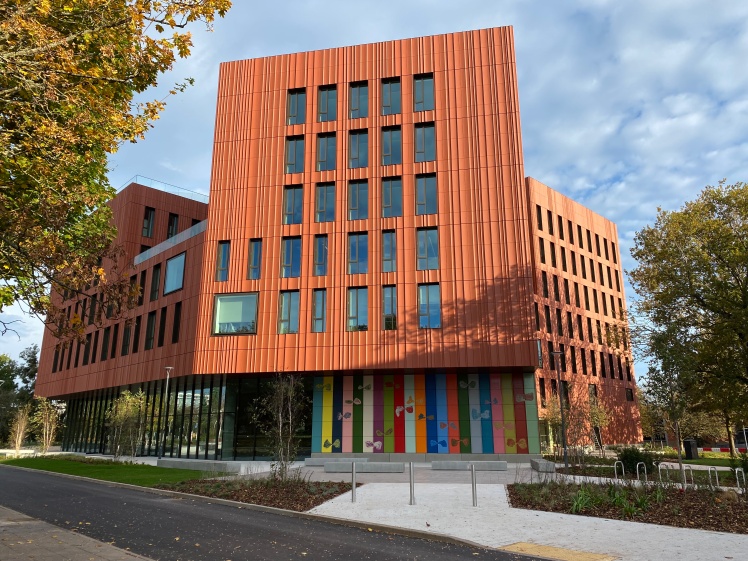
Feilden Clegg Bradley Studios Architect
Photo Karen Parker

Photo George Archer
The confident, red terracotta facing architecture of the new Faculty of Arts Building commands the space, summoning attention to itself. This bold presence is softened by trees, an integral inspiration for the architecture by Feilden Clegg Bradley Studios architects. Nestled in the overhang is the most vibrant striking design; an artwork by Matthew Raw which is an invitation to see what lies within. Heralding the creative nature of the place and the work that is undertaken inside, the new Faculty of Arts Building for the University of Warwick opened for business recently. Open to students and staff to bring the waiting spaces to life, it is an exciting building with a commission for Raw’s beautiful artwork included from the beginning. Faith in the Miraculous 2021 clay tiles by Matthew Raw.
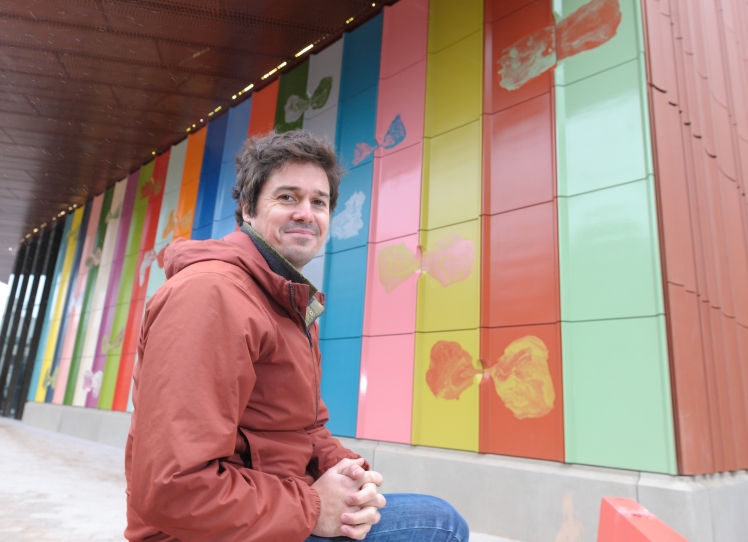
Photo George Archer
Matthew Raw, an artist working in clay, was awarded the task of creating a mural of tiles to adorn part of the exterior wall. The structure of the building dictated the space and practical details such as size, weight and medium, therefore it made sense to use the same tile manufacturer as the rest of the exterior, NBK Terracotta, to create the required effect. The space was 15 x 5m with the maximum size of a tile at 750mm, and for Raw, who favours working with grid structures in his work, this was a gift as 15m divided by 750mm is 21 columns of tiles. With the choice of 4 or 5 tiles in each column, 5 was the favourite.
The grid dimensions being chosen, the question now was how to use it. A visit to Coventry Cathedral provided the inspiration in the John Piper designed Baptistery window, with stained glass by Patrick Reyntiens. This radical and exuberant style with the concrete fins holding the glass in place was replicated in the tile shape. Glazing the tiles with bold colours and imaginative use of the inherent properties of the glaze provided the aesthetic satisfaction that was so important in the project. Raw wanted the piece to have connections with the city, hence the Baptistery window inspiration, and the use of colour in that design chimed beautifully with the project.
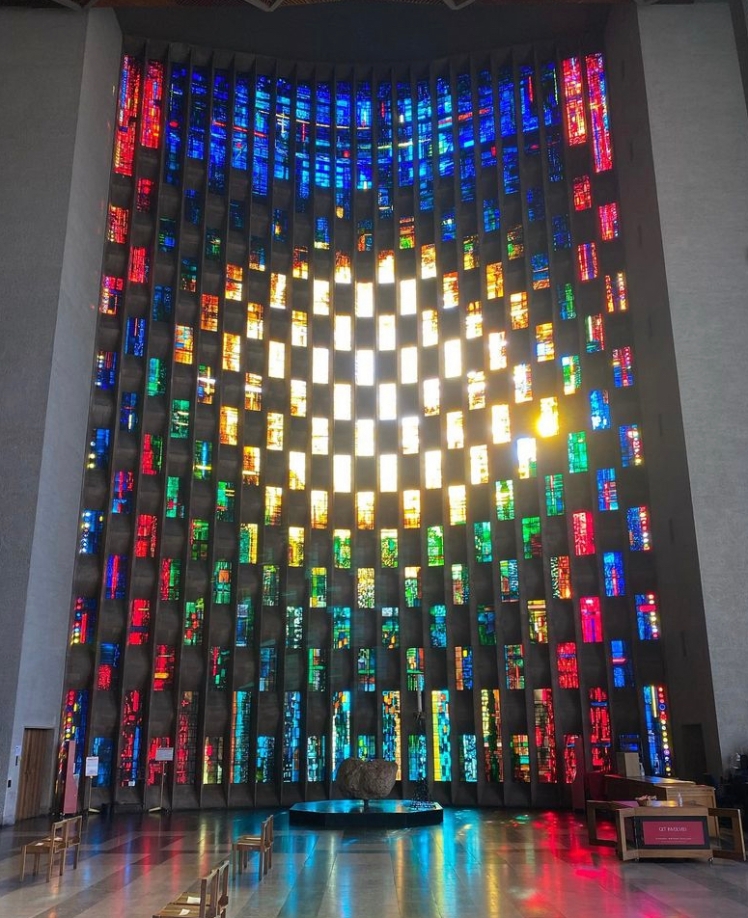
John Piper and Patrick Reyntiens.
Raw then created the die required to fit both the factory parameters and the plinth the work would be fixed to, which had already been set. Extruding the clay at the NBK Architectural Terracotta factory in Germany could begin. The extruded clay tiles were each 90cm and wet, therefore really heavy and took some careful manoeuvring onto a workbench for Raw to then carve and trim. Using techniques of cross-hatching and slip to join the clay tiles attracted attention in the industrial setting of the factory, but this successfully proved the joins would hold fast and not be subject to the possible shrinkage and joint failure inherent in the process. Raw needed the tiles to dry out slower than the factory’s usual settings and the tiles were wrapped and stored for 5 days which drew the moisture out more slowly, then they were fired slowly in the industrial kilns for 24 hours.
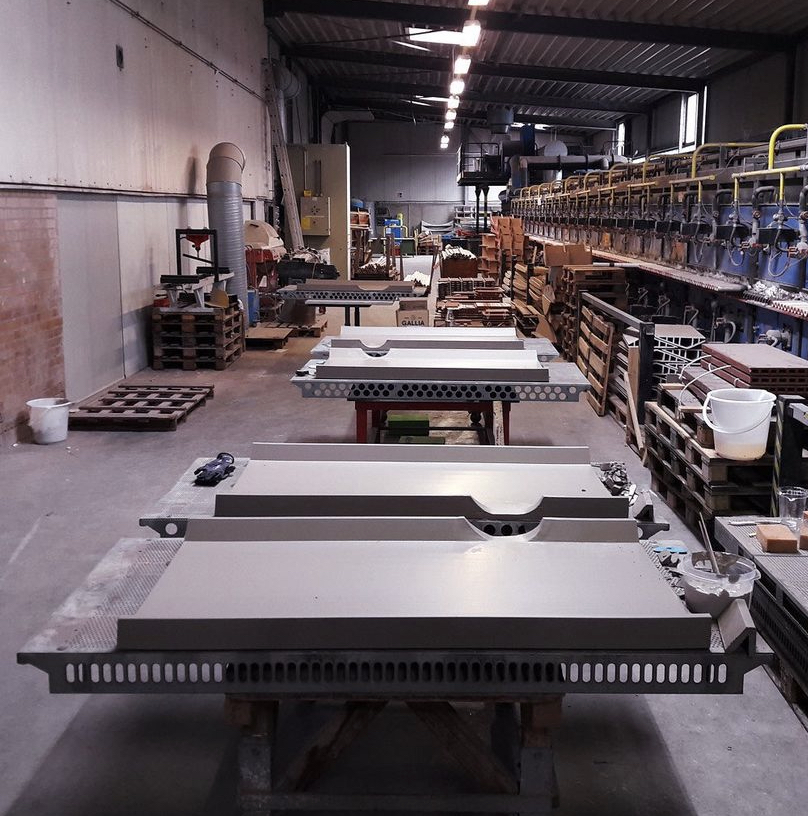
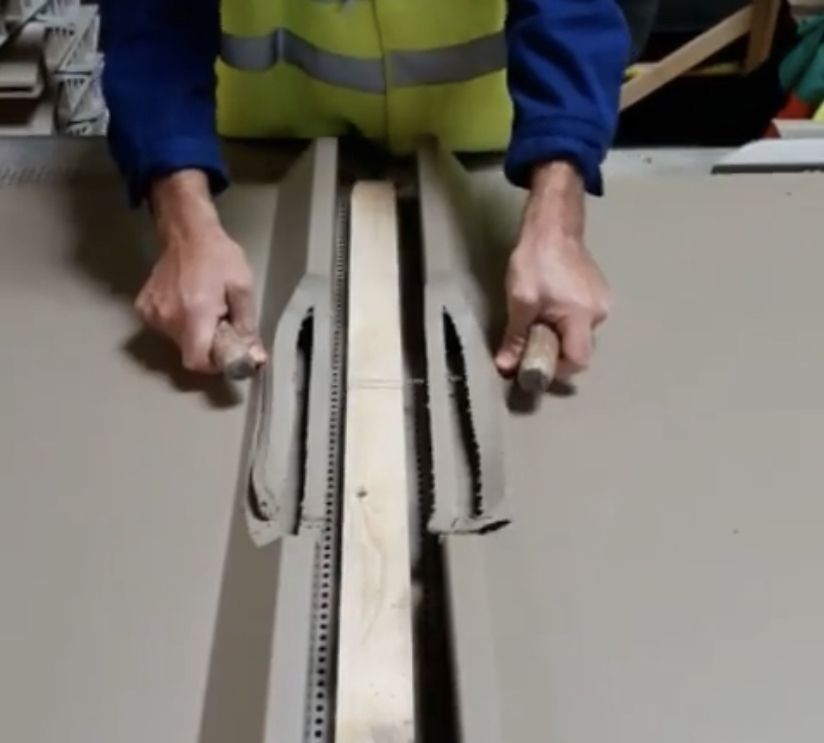
Photo Alexis de Raphelis
There are 105 tiles in total including the self-coloured plain glazed tiles and the 40 special tiles with the carving which allowed the flow of the glazes. There are spares, as the aim was to make two of every tile and very few broke in production or transit and all were installed successfully too. They are robust and had to be proved as such, as it became clear during planning that the position of the mural meant building regulations had to be complied with and not just those for an artwork in a public space. There are strong additional support rails behind the mural and the tiles had to undergo hard body and soft body testing. The hard impact tests involve dropping a 0.5 or 1kg steel ball onto a tile, whilst the soft body test swings a 50kg leather bag filled with glass beads or sand against the vertical tile cladding, adjusting the weight and height to simulate different types of possible impact. These tiles are going to remain fixed! The history of falling tiles on the 1970s Humanities building, a forerunner of the faculty building, are a ghost of the past.
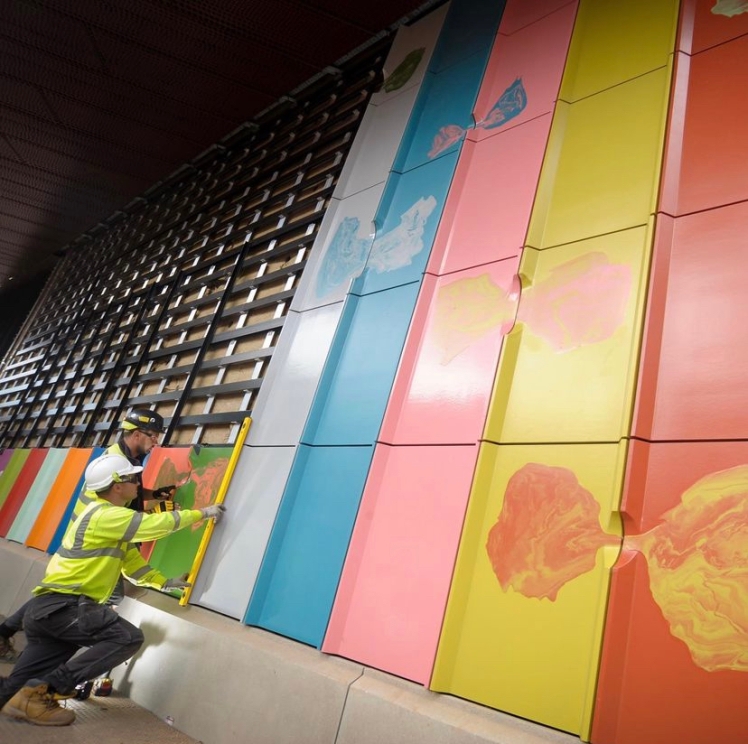
Photo George Archer
Choosing the colour palette was a mission and Raw wanted a purpose behind the choices. Raw also wanted a contrast and chose not to include the natural terracotta of the building cladding, so there were 21 opportunities for colour, one for each column of the design. Integrating the university community of staff and students, not only those who would be using the building, but also the whole campus, and even the wider Coventry community, was integral to the work. Arts staff were consulted in how they viewed the Humanities in colour, the English department discussing 6 different colours but settling on green, for example.
The pandemic then impacted on the process, so how was this to continue? Ben Hayday, Community Officer for the university, suggested contacting Westwood Academy, a local school in Canley, with an online educational pack to explore the colour options. The children were enthusiastic in making their suggestions and feedback was insightful and exciting. Encouraged to choose colours and overlap them to create a new colour in the mix, with the fusion and blend element Raw had in mind, provided the following comment when a red and white were blended, resulting in pink. It was explained by the pupils that it was about
Canley getting bad press when there was a lot of hope and love in this area.
Pupil at Westwood Academy
The consultation was expanded online to include a wider Coventry and Warwickshire community, who proved to be keen to take part. (See earlier blogpost Then and Now: Arts at Warwick.) Computer literacy was a possible drawback, but if the pandemic has achieved anything it has increased our skills in this area. Matthew Raw was provided with a library of colours from the consultation, and now the task was to narrow down the options and recreate the colours in a ceramic glaze.


Photo Alexis de Raphelis
Ceramics glaze technician at NBK, Knut Muller, requested the colour matching RAL reference, a code used by architects, and he would mix the colour. Samples of the tiles were sent and Raw chose 21, and then played around with the position of the tiles in his studio. This was now an aesthetic choice, creating an interesting blend, sometimes harmonious, sometimes clashing, finding the colours for each tile and for the fusion sections, employing a jarring or a blend to convey the coming together of all the disparate elements of the building and its purpose. Raw explained:
“I wanted that energy and cross pollination in the mural, the meeting of minds, departments and people to convey the chance of seeing what is going to happen.”
Matthew Raw in conversation with Karen Parker October 2021
The colours having been chosen, the task of glazing the tiles proved to be fascinating in this element of chance. Matthew Raw and his assistant, Alexis de Raphelis, poured the colours for the fusion element, tipping as the mood and flow of the glaze mixed and blended. Raw recalled the process:
Two people either end tipping it, stretching it out and a point where we’d say get rid, and it would go back out through the hole we’d created. All of a sudden it would just happen.
Matthew Raw in conversation with Karen Parker October 2021
Each tile had one shot at this process! It was only when the final firing was completed that the ultimate effect of the colour was revealed. The installation completed the process and Faith in the Miraculous proudly underpins the exciting Faculty of Arts Building.
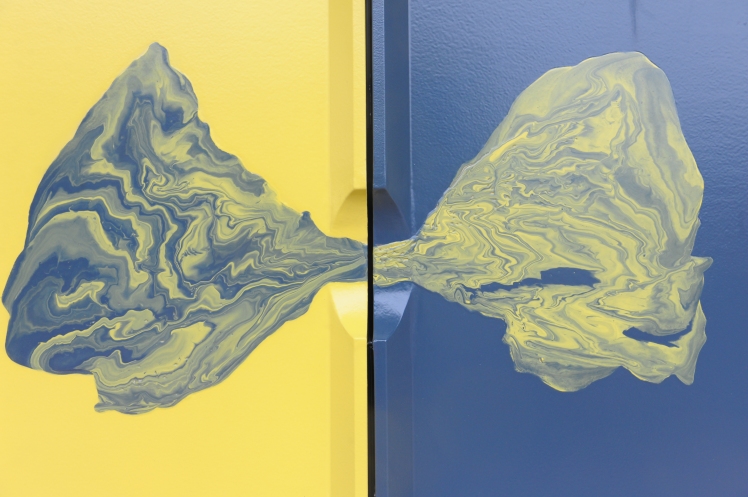
Photo George Archer
Sarah Shalgosky, Senior Curator for the University of Warwick Art Collection, originator of the commission had this to say in conclusion of the project:
“I think it is a work that is very rich in content. I like its play between city and campus, past and future, a reach back to the modernist vision. It is a point of enquiry and people can ask why, and in thinking through why, the different ideas start to fuse together and above all I am reminded of the continued jeopardy in and Faith in the Miraculous.”
Sarah Shalgosky, Senior Curator University of Warwick Art Collection, in conversation with Karen Parker October 2021
